My Son Valley seen from above - Photo: BD
Nearly half a century later, My Son was rebuilt thanks to tireless restoration efforts with the help of international agencies, domestic and foreign experts, and the consensus of people living around the heritage.
One afternoon in late August, even though it was late, each 45-seat luxury tourist bus and 16-seat bus still took groups of tourists after a long journey to the iconic Cham tower gate at the entrance to the My Son World Cultural Heritage Site.
Mr. Cristopher Dun, a visitor from Australia, holding a camera half the size of a brick, his legs motionless, looked up at the symbol of My Son with strangeness.
From the first broken bricks
"So beautiful, I have never been to a place with such a different space and scenery. Everything seems to be arranged by nature, a unique entrance opens to take visitors between two sides of the immense valley of sediments and the immense mountains and forests. It feels so sacred" - Mr. Dun said.
The tram ran along the smooth concrete road like a silk ribbon along the mountainside, in the middle of the valley without making any sound. When passing a row of houses that served as a resting place for tourists and a space for Cham art performances, the sound of Saranai trumpets suddenly started, forcing the group of tourists to stop and listen.
Inside the small house, a man wearing a turban and Cham costume held a Saranai flute, playing melodies that sounded sad and mournful in the deep forest.
From the entrance ticket control gate to the center of the towers is about 3km long, but any visitor wants the bus to take them slowly so they can listen to every sound.
The thousand-year-old heritage still challenges the search and excavation of scientists . Each brick, each ancient tower contains mysteries buried over time, and until now is an attraction for tourists from all over to come and worship.
On the way to walk deep into the valley to visit the towers, a group of foreign tourists were curious to see a strip of land being dug up. Strangely, although the excavation area was very large, up to hundreds of meters, almost every stone and brick was cleaned and kept in place.
As the land was cleared, tree roots emerged, and under the roots were bricks, traces of an ancient structure that may have existed for thousands of years were gradually revealed.
Not many sightseeing services, no large-scale art activities, and no open space like Hoi An ancient town, My Son still fascinates tourists who love heritage and want to learn the secrets of time, mostly international visitors.
Many Vietnamese tourists, when visiting My Son, seeing each foreign visitor standing motionless next to the piles of moss-covered, time-stained rubble, cannot help but wonder why these ruins are so strangely attractive.
Archaeological artifacts on display at My Son - Photo: BD
Heritage beside the bomb craters of war
Many times when we set foot in My Son, we and many visitors could not help but ask questions about the large, deep, basin-shaped holes that occasionally appear in the areas between the towers. Even though for decades, trees have grown densely, these deep holes are still intact and to this day are a testament to the harshness and cruelty of war.
Leading us to a deep, head-deep crater dozens of meters wide, surrounded by ancient trees, Mr. Le Van Minh, a tour guide at the My Son World Cultural Heritage Management Board, said that My Son had suffered many bombs and bullets during the war.
Although a long time has passed, these bomb craters are still densely present right next to many relics, like concave and convex scars on the heritage space.
As one of the first people to be present in My Son when the heritage began to be restored and zoned for restoration, Mr. Minh said that after 1980, when the first state officials entered My Son with experts, bombs and bullets were scattered all over the ground. Many people and bomb disposal officers were injured while approaching My Son valley.
Painter Nguyen Thuong Hy, a former officer of the Department of Culture and Information of Quang Nam and Da Nang provinces, said that in 1981 he went to My Son to assist Polish architect Kazik.
My Son at that time was a desolate ruin, many ancient structures were under vines and trees, many towers almost completely disappeared from the ground, only traces remained were mounds of earth and broken bricks.
No one thought that one day, the thousand-year-old heritage would be restored to its glorious glory, becoming a destination for tourists from all over the world like today. Everything started from clearing trees, removing tree roots that were deeply attached to the tower, and clearing mines…
According to experts, the biggest obstacle to the reconstruction of My Son is that there is no "original map" showing the original My Son that has stood through thousands of years of history. The restoration is based on documents from the French government combined with in-depth research on ancient Champa culture and architecture.
In the form of an ancient architectural complex that is reviving brilliantly for the public to admire today, there are drops of sweat, youth and even blood of previous generations who went to My Son to preserve and restore each brick wall.
That journey has lasted half a lifetime and will continue until the appearance of the 70 temples can be as close as possible to the original version.
These days, groups of tourists still come to My Son. The tours still take place in parallel with the excavation and restoration activities that have been going on for decades, helping to reconstruct the shape of My Son.
G tower strip in 1999 - Photo: BD captured the document
My Son is magnificent - solemn - majestic
With more than 70 temple towers of the Champa civilization built over nine centuries (from the 7th to the 13th century), My Son is considered to be on par with famous relics in the Southeast Asian region such as Angkor, Pagan, Borobudua...
When arriving at My Son, architect Kazik exclaimed: "The ancient Champa people put their spirituality into the soil and rocks. They knew how to rely on nature to create a magnificent - solemn - majestic My Son. This is a priceless museum of architectural sculpture and art of humanity that it will take us a long time to fully understand."
Time and war have severely damaged My Son heritage, but what remains still plays an important role in the world's historical, cultural, architectural and artistic heritage.
In view of the outstanding global values of a cultural heritage site that needs to be protected for the benefit of all mankind, on December 4, 1999, along with Hoi An, My Son relic site was inscribed on the UNESCO list of world cultural heritage sites.
Source: https://tuoitre.vn/nua-the-ky-dung-lai-hinh-hai-my-son-20250809111928331.htm


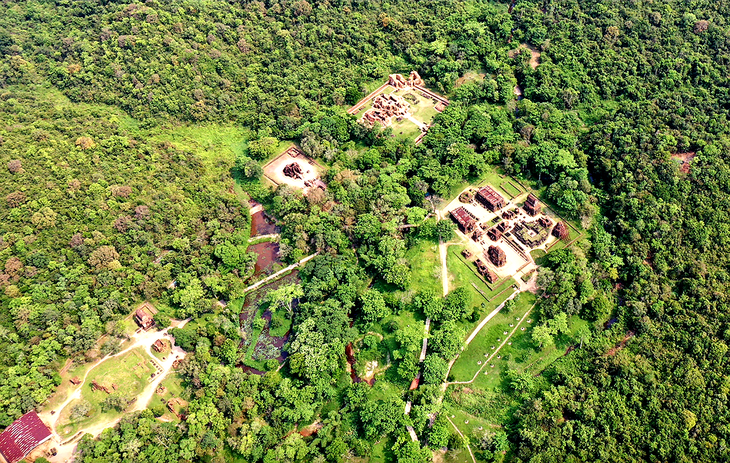
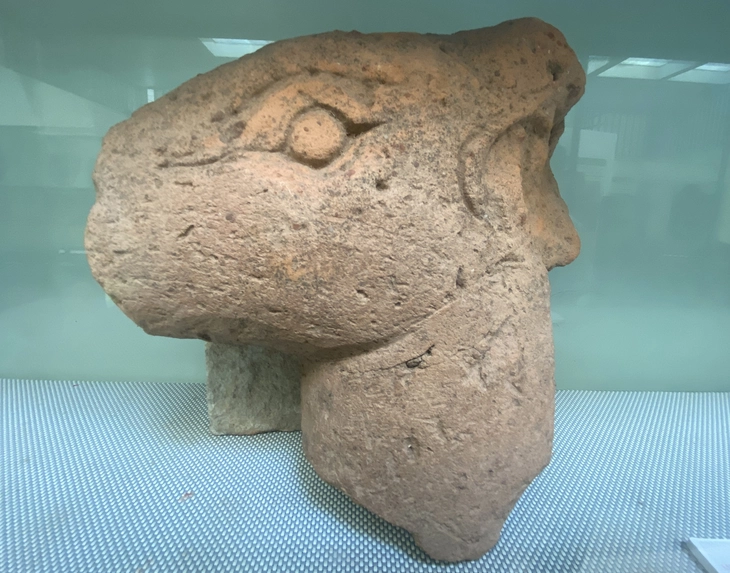
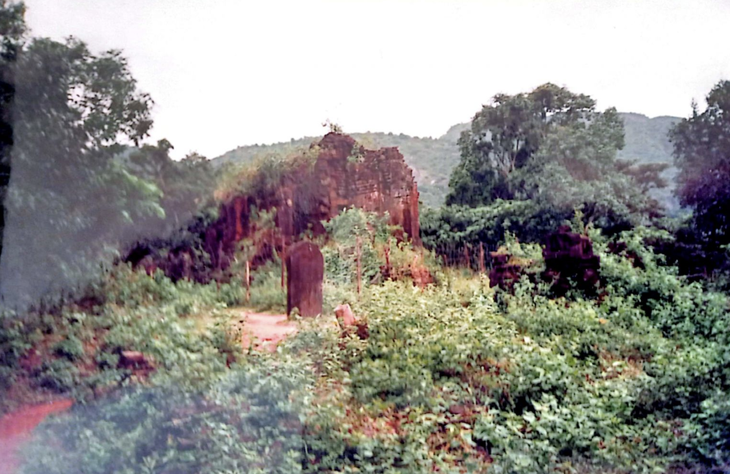


![[Photo] Hanoi morning of October 1: Prolonged flooding, people wade to work](https://vphoto.vietnam.vn/thumb/1200x675/vietnam/resource/IMAGE/2025/10/1/189be28938e3493fa26b2938efa2059e)

![[Photo] President of the Cuban National Assembly visits President Ho Chi Minh's Mausoleum](https://vphoto.vietnam.vn/thumb/1200x675/vietnam/resource/IMAGE/2025/10/1/39f1142310fc4dae9e3de4fcc9ac2ed0)
![[Photo] Keep your warehouse safe in all situations](https://vphoto.vietnam.vn/thumb/1200x675/vietnam/resource/IMAGE/2025/10/1/3eb4eceafe68497989865e7faa4e4d0e)








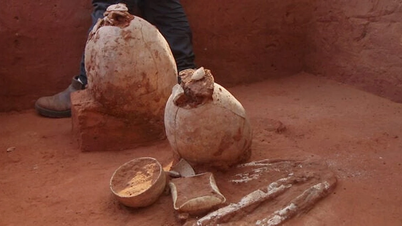
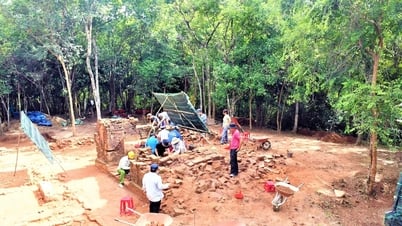















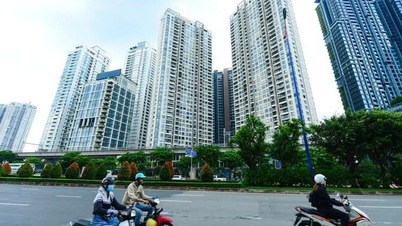



























































Comment (0)